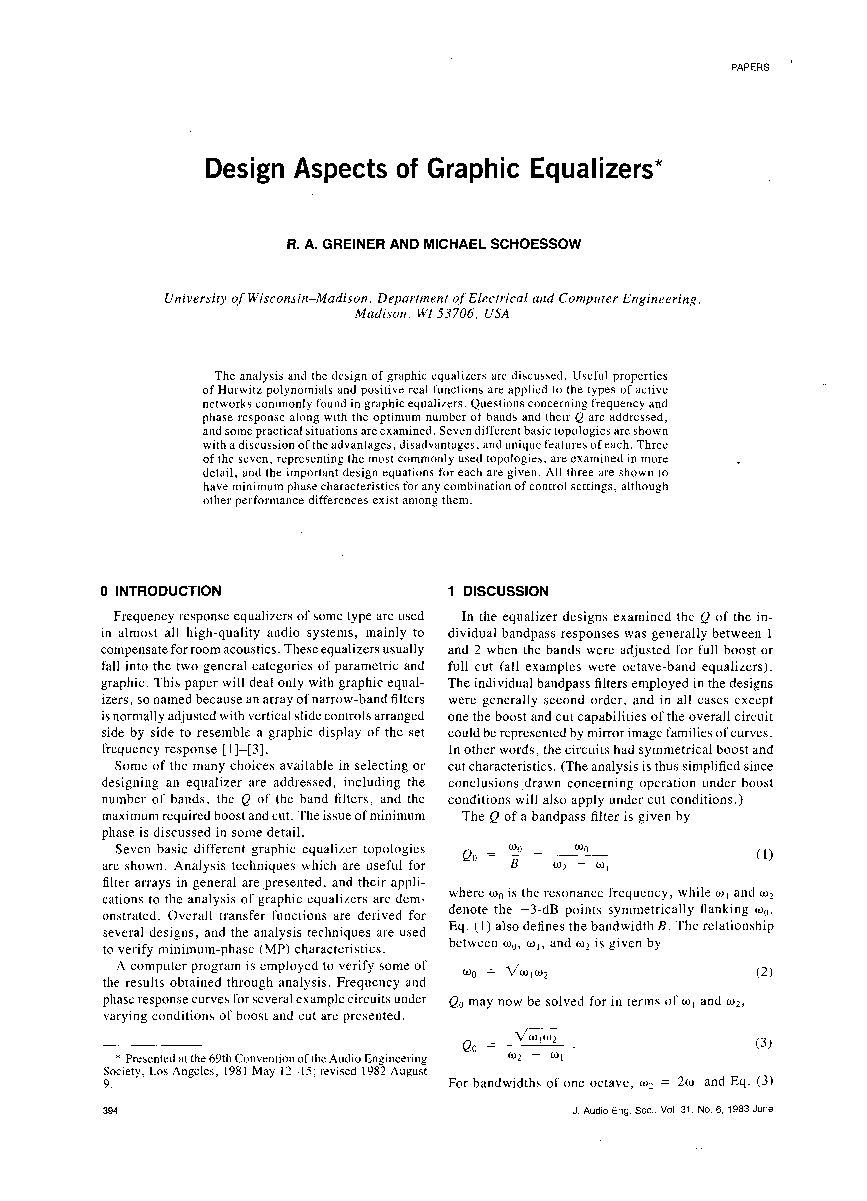Home / Publications / E-library page
You are currently logged in as an
Institutional Subscriber.
If you would like to logout,
please click on the button below.
Home / Publications / E-library page
Only AES members and Institutional Journal Subscribers can download
The analysis and the design of graphic equalizers are discussed. Useful properties of Hurwitz polynomials and positive real functions are applied to the types of active networks commonly found in graphic equalizers. Questions converning frequency and phase response along with the optimum number of bands and their Q are addressed, and some practical situations are examined. Seven different basic topologies are shown with a discussion of the advantages, disadvantages, and unique features of each. three of the seven, representing the most commonly used topologies, are examined in more detail, and the important design equations for each are given. All three are shown to have minimum phase characteristics for any combination of control settings, although other performance differences exist among them.
Author (s): Greiner, Richard A.; Schoessow, Michael
Affiliation:
University of Wisconsin-Madison, Department of Electrical and Computer Engineering, Madison, WI
(See document for exact affiliation information.)
Publication Date:
1983-06-06
Import into BibTeX
Permalink: https://aes2.org/publications/elibrary-page/?id=4574
(1044KB)
Click to purchase paper as a non-member or login as an AES member. If your company or school subscribes to the E-Library then switch to the institutional version. If you are not an AES member Join the AES. If you need to check your member status, login to the Member Portal.

Greiner, Richard A.; Schoessow, Michael; 1983; Design Aspects of Graphic Equalizers [PDF]; University of Wisconsin-Madison, Department of Electrical and Computer Engineering, Madison, WI; Paper ; Available from: https://aes2.org/publications/elibrary-page/?id=4574
Greiner, Richard A.; Schoessow, Michael; Design Aspects of Graphic Equalizers [PDF]; University of Wisconsin-Madison, Department of Electrical and Computer Engineering, Madison, WI; Paper ; 1983 Available: https://aes2.org/publications/elibrary-page/?id=4574